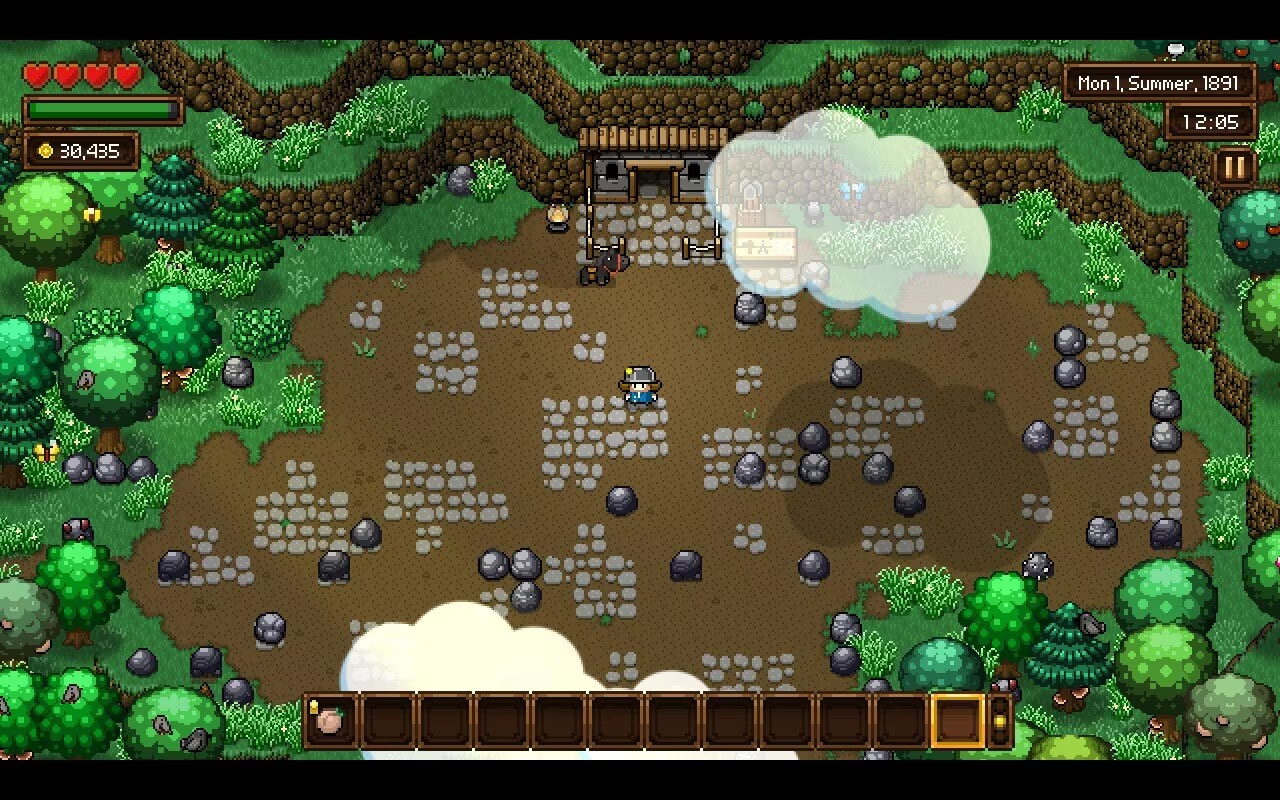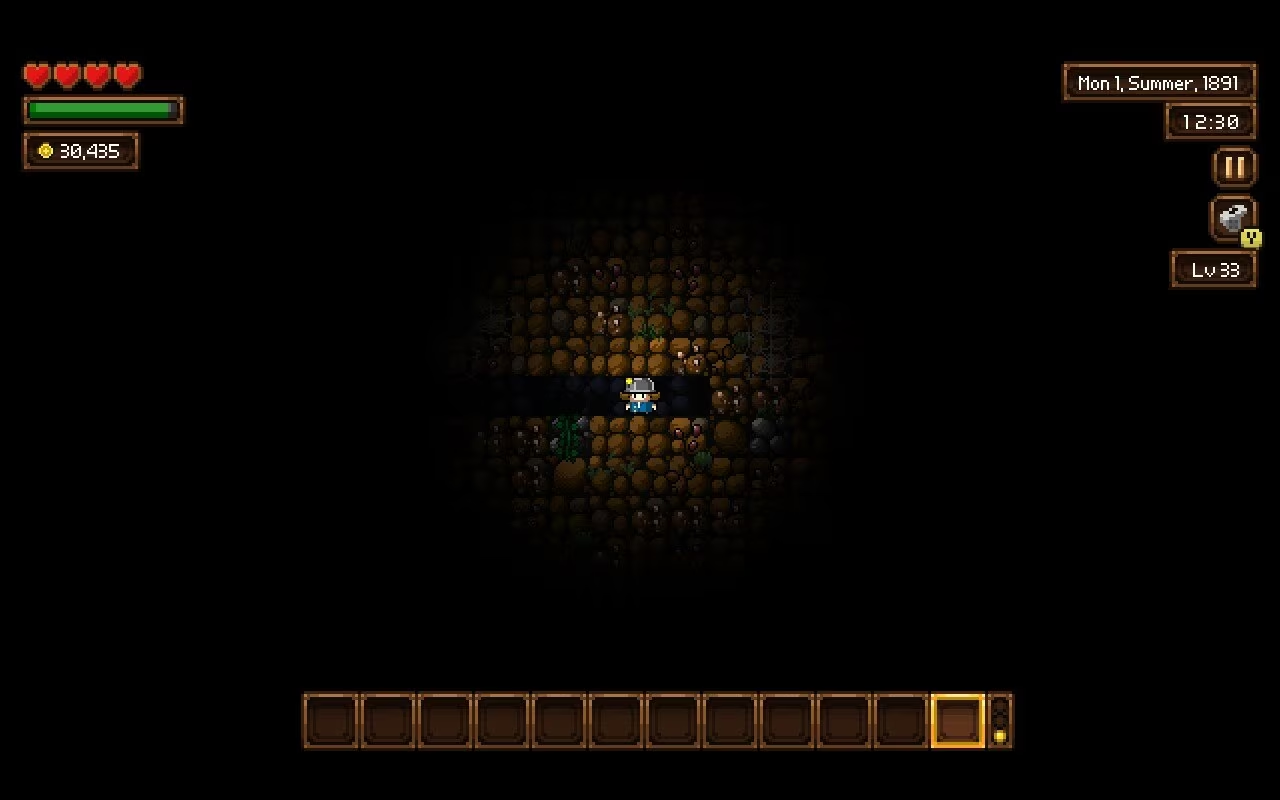Cattle Country: Life on the Frontier
Developed by Castle Pixel, known for their charming pixel art, and narrated by none other than Roger Clark (yes, that Arthur Morgan from Red Dead Redemption 2!), Cattle Country is another farming‑and‑exploration title that tries to stand out in a crowded genre. If you’re familiar with Stardew Valley - the game that has inspired countless imitators - you’ll recognize many of the same comforts, but this time the setting is unmistakably the Wild West. Cute details like birds wheeling overhead and smoke drifting from chimneys give the world a lively feel, while the pixel art remains gorgeous. Where Stardew Valley boasts a massive feature set built up over years, its visuals can sometimes feel bland; Cattle Country leans into style first, delivering a fresh look that immediately catches the eye.

What’s there to do in the Wild West?
Cattle Country gives you plenty of ways to fill your days, whether you prefer a bustling schedule or a relaxed pace. Farming is an obvious starting point, but you’ll also tend a variety of animals - from cows and chickens to more exotic livestock - and grow a wide range of crops on your homestead.

Beyond the fields, the game adds a 2D platforming twist in its caves. Mining feels reminiscent of SteamWorld Dig, letting you dig, rope‑ladder your way down, and even jump between platforms. A pleasant change from the usual farming routine.
Your farm sits next to a bustling town that serves as the social hub. A diverse cast of NPCs awaits conversation, relationship building, and trade. Shops include a bank, police station, butcher, wood seller, school, and even a post office. Seasonal festivals, quests to aid locals, crafting from gathered resources, and wilderness foraging all add depth to daily life.

That’s the spirit of the frontier: adventure, freedom, and opportunities that appear out of nowhere.
The Stardew Valley Comparison
For many players, Stardew Valley remains the benchmark for farming sims, and Cattle Country clearly follows its footsteps. If you’ve spent time in Pelican Town, the UI layout, basic mechanics, and overall rhythm will feel familiar, making the learning curve shallow.
Nevertheless, Cattle Country injects a few distinct twists. Unlike the perpetual tranquility of Stardew Valley, this game adds a layer of danger: enemies can appear at night, within mines, or even during daylight. If you prefer a worry‑free experience, the developers let you toggle hostile encounters off entirely.
Combat isn’t the only addition. The item catalog is larger, giving you more materials to discover and experiment with. The mine’s 2‑D platforming—digging downwards, using rope ladders, and jumping between ledges—feels like a mini‑game within the game, something absent from most other areas.

The town itself feels more alive thanks to its expanded services. Beyond the usual stores you’ll find a bank, police station, butcher, wood vendor, school, post office, and even a bar where you can play card games with locals. These details help craft a world that feels genuinely lived‑in.
Quality of Life Improvements
The most delightful aspects of Cattle Country are its visual polish and the occasional surprise—like robbers attempting to swipe your hard‑earned cash. Festivals are thoughtfully designed, dressing the town in seasonal décor that enhances the cozy atmosphere. Socializing at the bar over a game of cards provides a satisfying break from chores, while simply listening to NPCs’ stories remains an enjoyable pastime.

The developers have also addressed many common frustrations found in similar titles:
- Character likes and dislikes are displayed directly in the menu. You don’t have to guess.
- Tools never break, removing the need for constant repairs.
- Stacks of goods are unlimited, so inventory management stays painless.
- The watering system automatically targets only tilled soil, sparing you endless clicks.
These small but meaningful touches demonstrate a clear awareness of player pain points and keep the daily grind from feeling tedious.
What Needs More Love
No game is perfect, and Cattle Country has its rough edges. The crafting interface feels cluttered; with dozens of recipes on screen, finding the right item can become frustratingly time‑consuming. NPC dialogue also grows repetitive—characters often recycle the same lines day after day, even as friendship levels rise, making relationships feel shallow. Without a visual routine map, tracking where and when each villager appears is an extra challenge.
Movement speed is another sore spot. Traversing the expansive map feels sluggish, which can make long trips feel laborious. Later‑game quests tend to devolve into fetch‑type errands, lacking a compelling overarching narrative. You end up earning money to expand the town, but there’s little story momentum to anchor those efforts.
The New Frontier of Farming Games?
Stardew Valley still feels more mature in many respects, yet Cattle Country offers a quicker, arguably “cheat‑like” progression that lets you build and tend your farm with less grind. If you’re growing weary of the valley’s familiar routine, this Wild West setting provides a refreshing change of scenery. Aside from the issues noted above, there’s little to fault—its charm, polish, and distinct flavor earn it a spot on any recommended‑games list.
Steam Deck: Great Experience
The game is Verified for the Steam Deck and ships with a native Linux build. It runs smoothly even at minimal TDP settings, allowing marathon sessions on the go. All UI elements map cleanly to the Deck’s controls, text remains crisp, and you can crank the frame rate up to 60 FPS for buttery‑smooth gameplay. In short, Cattle Country is a perfect little handheld title for those long commutes or lazy afternoons.
Disclosure: we were given a key from the publisher to review the game, but the opinion is mine.
